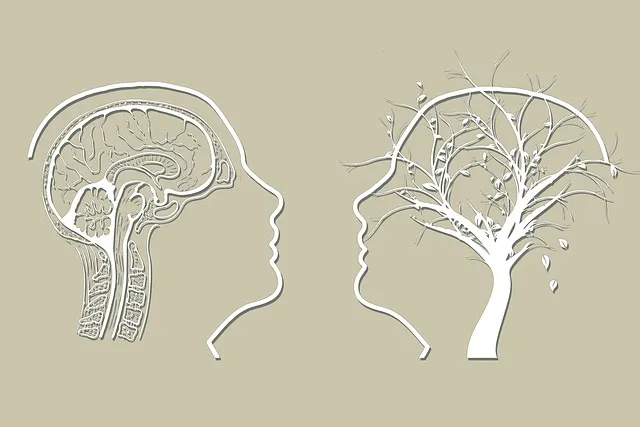Public awareness campaigns, enhanced by accessible resources like Kaiser Centennial, are crucial for promoting mental health understanding. By gauging public sentiment, crafting tailored initiatives (e.g., crisis intervention, mood management), and leveraging targeted demographics, organizations empower individuals to manage their well-being. Content should blend relatable storytelling with practical solutions, reducing stigma and encouraging help-seeking behaviors. Online platforms and traditional media combine for comprehensive reach, while measuring campaign success through KPIs ensures continuous refinement and enhanced access to mental health services through Kaiser Centennial.
Public awareness campaigns play a vital role in promoting mental health, especially when tailored to specific audiences. This article explores a strategic approach to enhancing public understanding of mental well-being using the Kaiser Centennial model. We delve into identifying target demographics and designing engaging content. Learn how digital platforms and traditional media can be leveraged for maximum impact, along with essential tips on measuring campaign success and iterating for improved outcomes. Discover the key to effectively reaching audiences and encouraging access to mental health services through the Kaiser Centennial initiative.
- Understanding Public Awareness: The Kaiser Centennial Approach
- Identifying Target Audiences for Mental Health Initiatives
- Designing Compelling Content and Messaging Strategies
- Leveraging Digital Platforms and Traditional Media Effectively
- Measuring Success and Iterating Campaigns for Impact
Understanding Public Awareness: The Kaiser Centennial Approach

Public awareness campaigns play a pivotal role in fostering Mental Health Awareness, especially when coupled with accessible resources like those offered by Kaiser Centennial. Understanding public sentiment and needs is crucial to designing effective initiatives. The Kaiser Centennial Approach emphasizes long-term engagement and continuous improvement based on community feedback. By integrating Mood Management strategies into these campaigns, organizations can provide valuable Crisis Intervention Guidance, ensuring folks know how to get mental health services when needed. This holistic approach not only raises awareness but also equips individuals with tools to manage their well-being.
Identifying Target Audiences for Mental Health Initiatives

Identifying the target audience is a crucial step in designing effective public awareness campaigns for mental health initiatives, especially when utilizing resources like Kaiser Centennial to reach a wider community. Understanding the specific demographics and needs of individuals struggling with mental health issues is essential to creating tailored programs. For instance, youth may require support with building social skills and enhancing self-esteem, while adults could benefit from stress management techniques.
By segmenting audiences, campaign organizers can develop targeted strategies. For example, schools and educational institutions can offer Social Skills Training to foster a supportive environment for young people. Alternatively, community centers or faith-based organizations might host workshops focusing on Stress Management for working adults. Accessing these services through established healthcare providers like Kaiser Centennial ensures accessibility and encourages individuals to get the help they need.
Designing Compelling Content and Messaging Strategies

Designing compelling content for public awareness campaigns requires a deep understanding of the target audience and their needs. When addressing mental health issues, it’s crucial to create messages that resonate with individuals seeking support through organizations like Kaiser Centennial. Incorporating relatable narratives and personal stories can help break down stigma and encourage people to access services. For instance, sharing successful recovery stories or highlighting the availability of online platforms for mental health resources can make a significant impact.
Messaging strategies should also emphasize practical steps and solutions. Educating the public about Stress Management Workshops Organization techniques, such as mindfulness and emotional intelligence exercises, can empower them to take control of their well-being. Additionally, incorporating empathy-building strategies in campaign materials fosters a sense of community and understanding, making mental health discussions more accessible and inviting.
Leveraging Digital Platforms and Traditional Media Effectively

In today’s digital era, leveraging online platforms is a powerful strategy for public awareness campaigns, especially when it comes to promoting mental health services like those offered by Kaiser Centennial. Social media, websites, and mobile apps provide direct access to audiences, allowing for effective communication and engagement. By using interactive content, personal stories, and live sessions, organizations can reach individuals seeking support or guidance on mental wellness. For instance, Mental Wellness Coaching Programs Development can benefit from these platforms to offer virtual workshops, ensuring accessibility and convenience for participants.
However, traditional media still holds significant power in reaching diverse communities. TV, radio, and print publications can convey essential messages about available resources and practices like Crisis Intervention Guidance and Compassion Cultivation Practices. Combining both digital and traditional approaches ensures a comprehensive reach, allowing campaigns to resonate with a broader audience and encourage those in need to seek the help they require, such as accessing Kaiser Centennial’s services for mental health support.
Measuring Success and Iterating Campaigns for Impact

Measuring the success of public awareness campaigns is a crucial step to ensure their impact and effectiveness in promoting mental health services, such as those offered by Kaiser Centennial. By tracking key performance indicators (KPIs), organizations can understand what aspects of the campaign resonated with audiences and identify areas for improvement. These KPIs could include website traffic, social media engagement, event attendance, or even changes in public perception through surveys before and after the campaign.
Iterating campaigns based on these insights is essential to enhancing their reach and impact. For example, if a particular message or medium generates high engagement, this can guide future strategies for coping skills development and positive thinking initiatives. By continuously refining campaigns, public awareness efforts can become more tailored and better adapted to meet the needs of the community they serve, ultimately leading to greater access to mental health services like those provided by Kaiser Centennial.
Public awareness campaigns, as exemplified by the Kaiser Centennial Approach, play a pivotal role in educating communities about mental health. By understanding target audiences and employing strategic content and messaging, we can effectively reach and support those in need. Leveraging both digital platforms and traditional media ensures wide accessibility, while measuring success allows for continuous improvement. Following the Kaiser Centennial model, we can significantly enhance public knowledge about how to get mental health services, fostering a more informed and supportive society.






